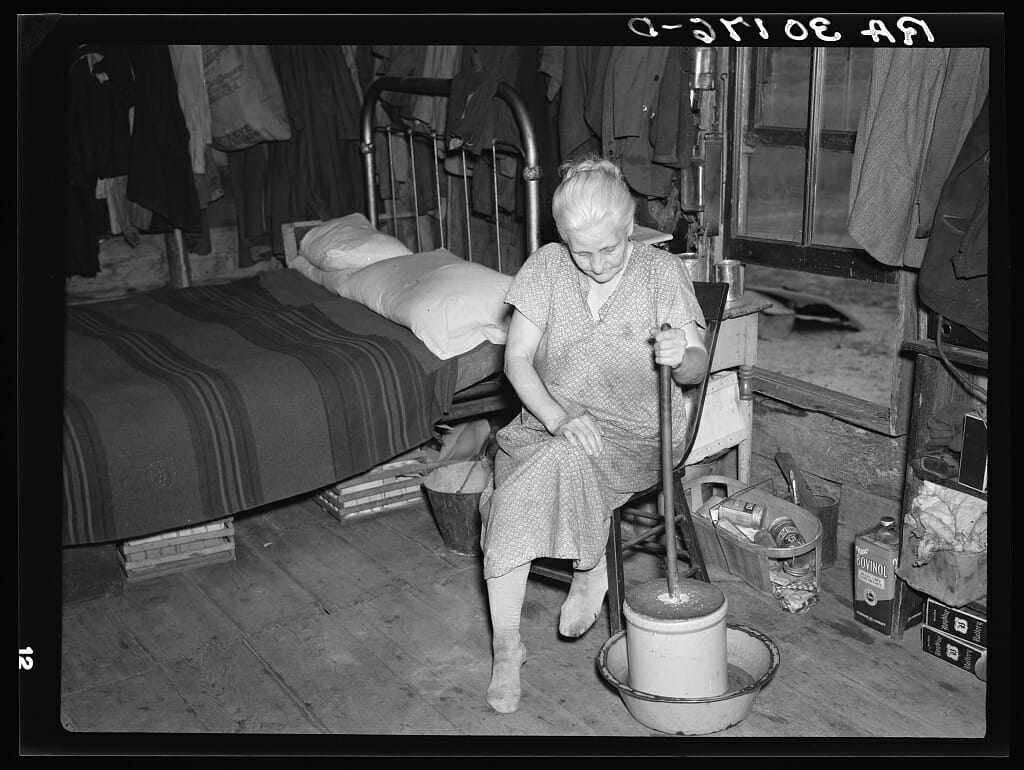Gallery with alias: PUBLIC_HISTORY_BLOG_POSTS not found
It’s the shortest question, and yet the hardest to answer. It challenges public historians in ways that put their knowledge, competence, credibility, and authority on the line.
So What?
It’s a fair question, of course, but it can unsettle us. Behind these words is subtext: I don’t care. I’m not interested. This is irrelevant.
For public historians, responding to the “so what” question in meaningful ways is a prime directive and one of the key imperatives of public history: to educate, to entertain, and to inspire. Like it or not, we must now add: to explain why anyone should give a rat’s ass about this old stuff.
“Welcome to local history,” says the museum.
“What’s that dusty old thing over there behind glass?” asks the visitor.
“That’s a butter churn. Long ago it’s what people used to make butter. It says so there on the little sign.”
“Oh, that’s nice,” says the visitor walking away. “Where’s the war stuff?”
BEYOND THE FACTS
Back in the early days of television there was a popular detective show called Dragnet. Any time a witness added embellishment to an event under investigation, the laconic detective Joe Friday would interrupt with the a stern request, “Just the facts, ma’am.” All we need are the facts to understand what happened here. Just tell us who, what, where, and when—ma’am.
Far too often this is the way many museums present history. Here are the dates, names, and places. It’s Dragnet history.
Of course, there’s only so much “history” that can be written on small exhibit display tags, so any elaborated explanation about things things will come, most likely, from tour guides and docents–real people who can interpret and explain history, answer questions, and tell stories. Modern museums use digital media and internet technology to enhance, explicate, and expound upon exhibits beyond just the facts.
But the most effective museums go beyond the facts and help visitors understand “why” butter churns are important to history.
A butter churn is a device used to convert cream into butter–one of humankind’s oldest and sustainable foods. Traditional butter making is done through a mechanical process, frequently via a pole inserted through the lid of the churn. Along with the invention of modern home refrigeration appliances in the early 20th century, commercially made butter became widely available, displacing most practices of making butter at home. However, the use of butter churns, such as the one you see before you, remained common throughout rural parts of the United States well into the mid-20th century, especially in poor, remote areas lacking electricity. Hand powered butter churns were commonly used throughout the Appalachian Mountain region, as well as the Allegheny Mountains of Western Pennsylvania. It could be said that the general demise of butter churns can be traced back to the New Deal modernization programs of the Great Depression era, where public works projects such as the Tennessee Valley Authority brought electricity and improvements to agricultural industrialization throughout the Appalachian region, making possible commercially made “store-bought” butter on a large scale. Thereafter, the hand powered butter churn became increasingly obsolete in most homes, except for those on the trailing end of American modernization between the 1930s and 1960s.
A critical (inquisitive) read of this museum’s explanation of the butter churn might lead us toward so many other questions about the histories of dairy foods, butter making technology, refrigeration technology, mass commercialization of food industries, sociological implications of domestic technologies and modernization, cultural effects of shifting patterns of urbanization, etc. The detailed spin-off questions are endlessly fascinating (we think).
But for many people, the take away question remains: So what?
For public historians trying to craft the all important take away meaning for any given artifact, exhibit, event, program, or the ultimate meaning of museums themselves, there has to be some consideration of the “so what” question—something that ties together and synthesizes facts and interpretations, objects and meaning, irrelevance and significance.
“Hey look, here’s a butter churn!” says the museum.
“So what? (I don’t care. I’m not interested. This is irrelevant),” says the visitor.
“Well now,” responds the museum, enthusiastically, “did you know that butter is one of the oldest foods, dating back to 6500 BC? Legend says that butter was first discovered when a nomad tied an animal skin of cream to his horse. After a long journey the cream had turned to butter, and presto: butter is invented. But who has time to tie cream to the side of a horse and gallop around the countryside? This is where the churn comes in . . . ”
PUBLIC HISTORY MATTERS
At The Social Voice Project, we celebrate history and people through our community oral history projects that give us a chance to look, listen, and record the voices and stories of our time. We encourage all local historical societies and museums to capture, preserve, and share their communities’ lived experiences, memories, customs, and values. Future generations are depending on it.
Contact TSVP to learn more about our commitment to public history and community oral history projects.


You must be logged in to post a comment.